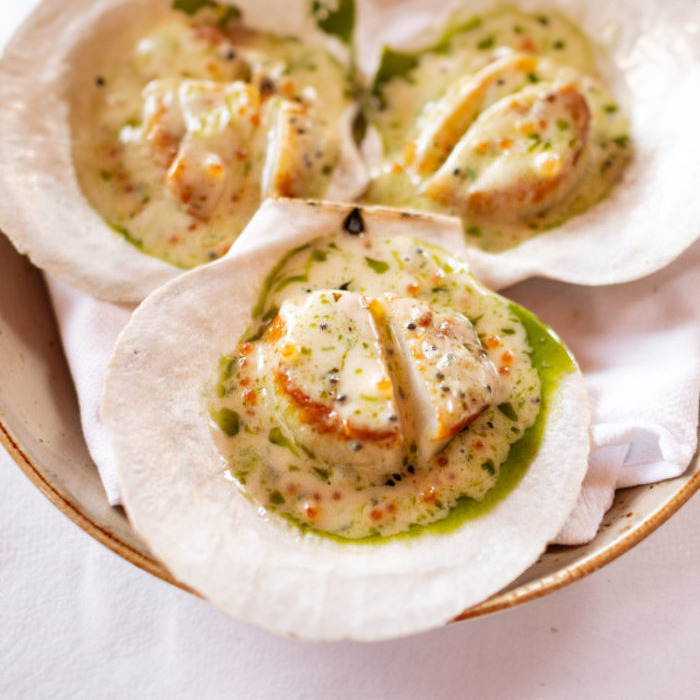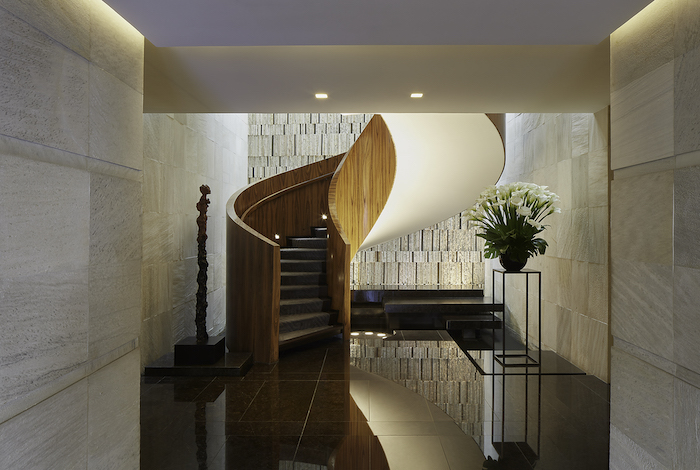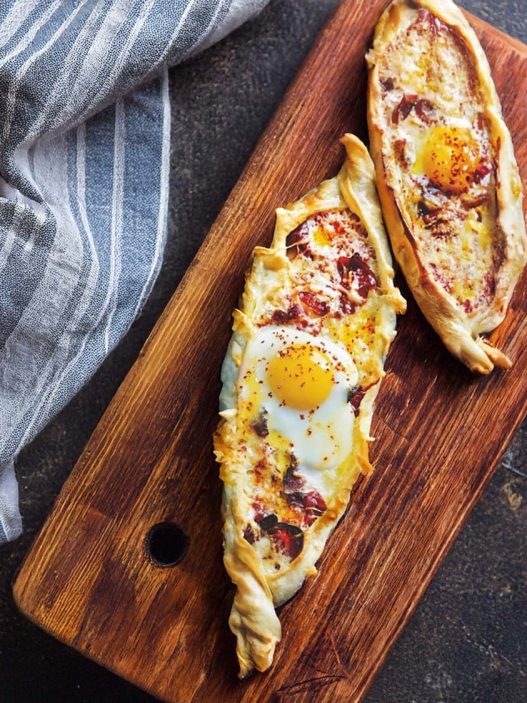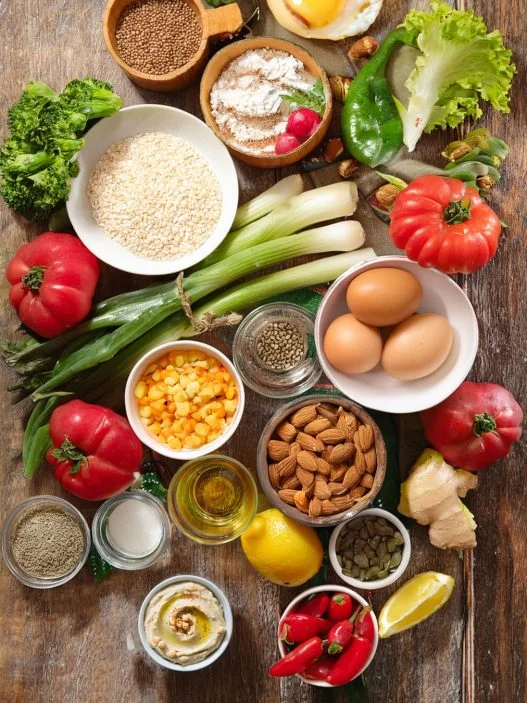Scallops are delicious to eat, pretty to look at, and relatively easy to cook if you just follow a few simple rules. Chef RJ Yoakum weighs in on the most important steps to scallop success.
What are the secrets to cooking scallops like you are a seasoned restaurant pro? Executive Chef RJ Yoakum of Georgie, an eclectic french restaurant in Dallas, shares a few simple tips on how to prep and cook scallops for a restaurant-worthy meal in the comfort of your home.
First, what are scallops?
Scallops, similar to other bivalves like mussels, clams, and oysters, are filter feeders. They have the ability to extract suspended minerals from water, and in effect, improve water quality. The mollusks consist of two shells that are saucer-shaped and connected by an adductor muscle which is what we sear or roast to devour.
Scallops are widely available across the globe, thriving predominantly in the cooler waters of the North Atlantic, including the northeast United States and parts of Canada, as well as the North Pacific regions of Japan, Russia, and Alaska. They are also found in European waters, particularly the North Sea and the English Channel, and in the cold southern waters of Australia and New Zealand.
Scallop Types
There are two types of scallops, sea and bay. They both differ in size, taste, and location. Sea scallops are larger and have a firm yet tender meat with a slightly sweet flavor. They are found in deep, cold water along the Atlantic coast and worldwide. Sea scallops cook quickly, taking about 4 to 5 minutes, and are often pan-seared to develop a nice, caramelized crust. Meanwhile bay scallops are smaller and sweeter. They are usually found in estuaries along the Eastern Seaboard. Due to their small size, they cook very quickly in about 2-3 minutes. Therefore, they do not get a nice sear like larger sea scallops. While they can be sautéed, they are also commonly used in stews, pasta dishes, and gumbo.
When planning to buy scallops, consider the number of people you need to serve and budget accordingly. On average, 3-4 large scallops per person should suffice, but this may vary depending on the size of the scallops. A pound of scallops typically contains 20-30 large scallops, but some extra-large ones can be as low as 10-20 pieces per pound. Keep in mind that scallops do not reheat well, so it’s better to buy just what you need.
Prepping and Cooking Tips
Serving Scallops Raw
In Latin American cuisine, serving scallops raw is a traditional practice, particularly in coastal regions where seafood is a staple. This method of preparation really brings out the scallops’ natural sweetness and delicate texture. Raw scallops are often featured in dishes like ceviche, where they are marinated in citrus juices such as lime or lemon, which effectively “cooks” the scallops through acidification. This process firms up the flesh, making it a refreshing and light dish, often enhanced with herbs, onions, and peppers for additional flavor.
One great example is Peruvian Scallops a la Chalaca, a vibrant dish that serves raw scallops in their shells, topped with a salsa made from onions, tomatoes, and cilantro, all brought together with a generous squeeze of lime juice.

Minimal Marination
When it comes to marinating, you can go the traditional route by sprinkling salt and pepper on both sides of the scallops. But it’s important not over-seasoning them. Whether it be with salt, sugar, or citrus as it can inadvertently “cook” the scallop as mentioned above.
For a delicious pre-cooking marinade, Chef Yoakum recommends using seaweed to season the scallops gently. To do this, you need to hydrate the seaweed in water until it’s soft enough to place over the scallops. Leave it there for about half an hour to add an umami flavor that pairs perfectly with the sweetness of the scallop.
Dry and Sear for Perfection
Chef Yoakum advises drying the scallops thoroughly before searing them in a hot pan with a thin layer of oil. This method ensures that the scallops achieve a beautiful golden color without sticking to the pan. It’ll be best for you to wait until the oil is shimmering before adding them.
Then gently place the scallops in the pan, making sure they are not touching each other. Avoid moving the scallops around the pan, as this will prevent them from developing a crust. If you add the scallops too early, they may stick to the pan and not develop a golden color. Chef Yoakum suggests cooking them at a high temperature for a few minutes on each side until golden but not burnt. Cook the scallops for 2-3 minutes on one side until a golden crust forms, then flip them over and cook for an additional 1-2 minutes. Be careful not to overcook the scallops, as this will make them tough and rubbery.
How do you know your scallops have been cooked properly? Look for a golden, caramelized crust to form on the outside, and the sides should lose their translucency and become more opaque. The scallops should feel firm to the touch yet still have a slight bounce back, indicating they are perfectly juicy and tender inside.

Contrast and Brighten the Scallops’ Sweetness
When it comes to garnishing cooked scallops, try these tips to add some flavor and texture. For a pop of freshness, add a squeeze of lemon or lime.
For brightness sprinkle them with fresh herbs like sprouts, parsley or cilantro. In my opinion sauces make any dish taste better, you can’t go wrong with hollandaise or a lemon-butter sauce to elevate the flavors of your cooked scallops. Actually Chef Yoakum enhances his by adding a smoky charcoal butter. For some additional texture and to make the dish heartier, try serving with a side of farro, roasted red peppers or sweet potatoes.
Finally top with something crunchy like toasted breadcrumbs or fried shallots. Or you can try something different by using Chef Yoakum suggestion–caviar. He uses smoked trout roe and peas for his garnishing at Georgie’s. The key for all garnishing and pairing options is keep things simple allowing the scallops shine.
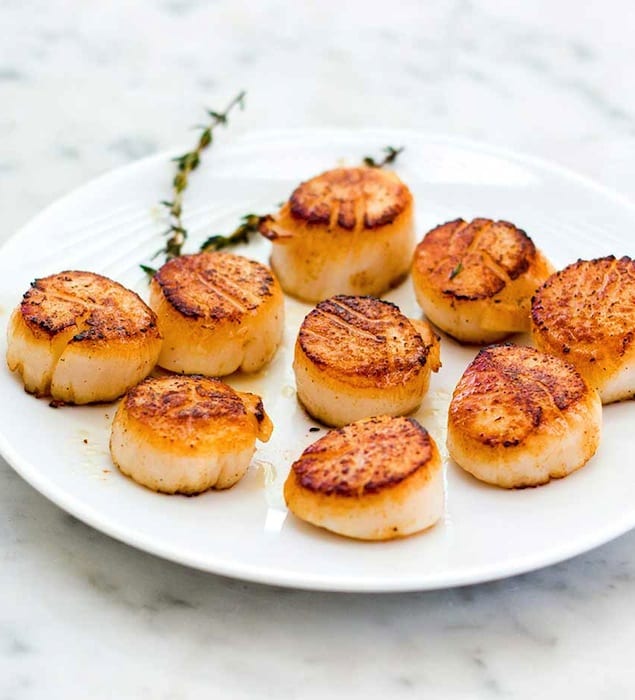
Ready to put these tips to the test? Try them out with these scallop recipes; Tender Scallops with Squash Puree and Pomegranate Beurre Blanc, Miso Blood Orange Scallops, Grilled Scallops with Tomato Mango Salsa and Tomatillo Guacamole, or Peruvian Scallops a la Chalaca.











